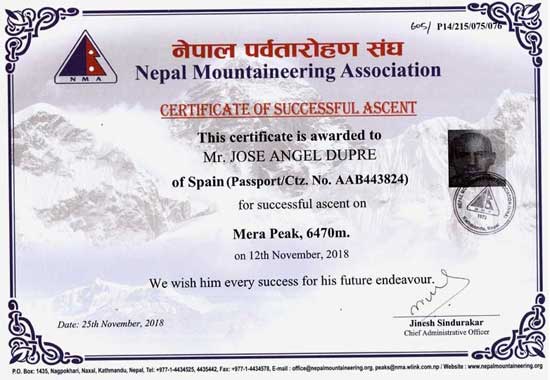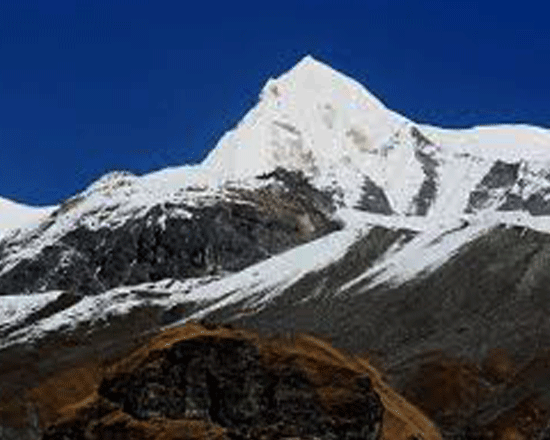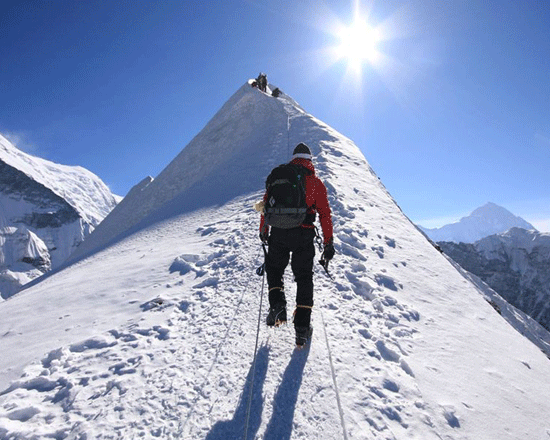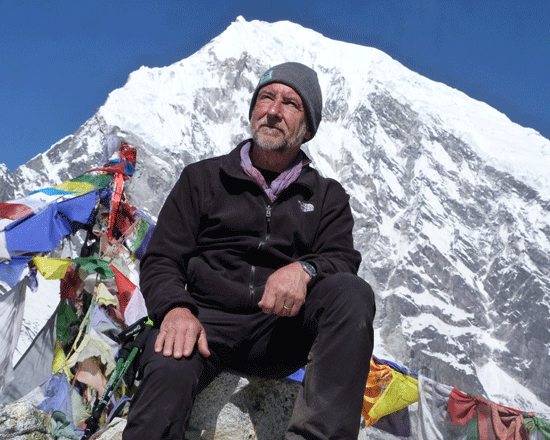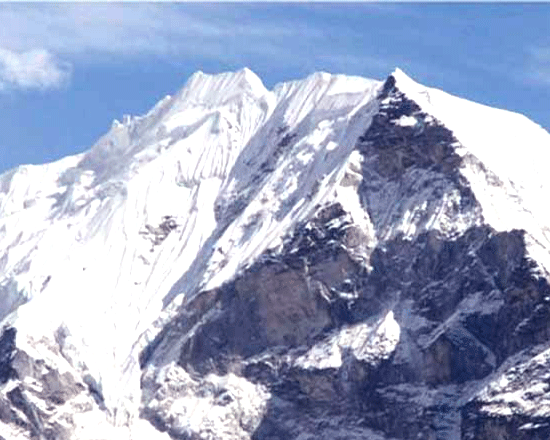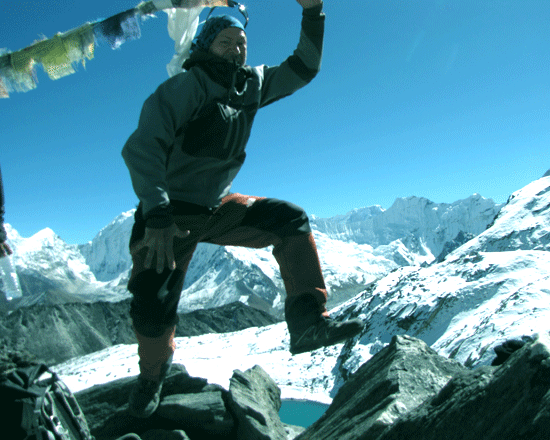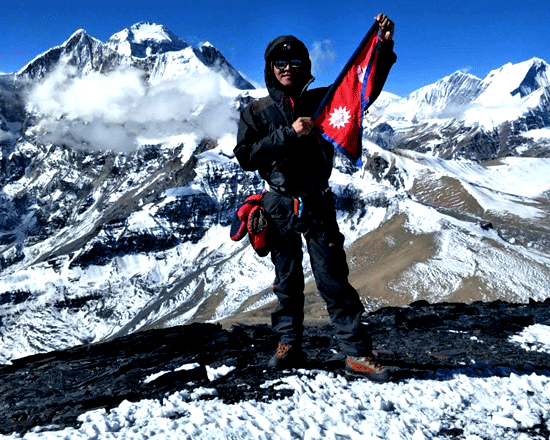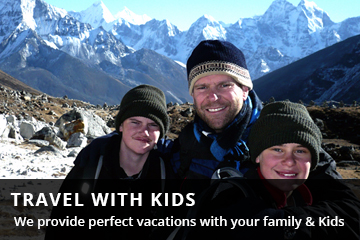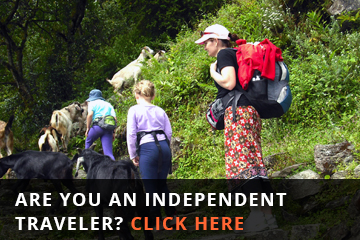Mera Peak climbing Khare
Mera Peak climbing Khare
Peak Climbing In NepalTrip Facts
Since the terrain can be hard and the days long, hikers on these treks should be in good physical condition and have some previous mountain walking experience. Steep climbing may be involved, although it is never necessary to use ropes. Treks at this level can he arranged for periods of 16 to 21 days. Typically, a gradual ascent through a green river valley will lead you up to a number of high passes, where you will reach the altitude of 5416m. Often times, you will get a close insight into the Tibetan culture. Participants should expect to trek above 5416m/17872ft.
Mode of Travel : flight and hike Hold Your Guide : Pemba sherpa100%
Overview
Khare Mera Peak Climbing package Arrange from Khare
The Mera Peak climbing trek in Nepal begins from Khare, ascends to high camp, conquers Mera Peak, and returns to Khare. Nepal Wilderness Trekking (Pvt), offers organized packages for climbing both Mera Central at 6,461 meters and Mera North at 6,476 meters. Our expeditions typically span 2 nights and 3 days, starting and ending in Khare, either your Trek from Sherpani Col West Col pass or trek from Lukla and passing Chutanga 3050m on your own or with a guide hired from Lukla. However, our Mera peak climbing package starts from Khare, it is the quarter climbing package which means you wouldn’t need to organize all equipment doing air cargo to Lukla. Feel comfortable doing the trek to Khare with a guide and less porter or with one porter guide and join our Mera peak climbing team.
The joint group Package for Mera Peak Climbing from Khare will be normally made up of small teams of around 4 to 6 people with moderate climbing and hiking experience. If interested in trying a snowy summit in Nepal that isn’t too difficult but requires a basic understanding of alpine skills.
History and Significance
Khare Mera Peak was first summited in 1953 by Col. Jimmy Roberts and Sen Tenzing. However, it wasn’t until later that it gained popularity among trekkers and climbers. Today, Khare Mera Peak stands as a testament to Nepal’s allure for mountaineers from all over the world. The peak itself is divided into three main summits: Mera North (6,476 meters), Mera Central (6,461 meters), and Mera South (6,065 meters). The most commonly attempted is Mera Central, although some also venture to Mera North for an extra challenge.
Khare Mera Peak is more than just a climbing destination; it represents the rich cultural tapestry of the Sherpa people, whose lives are intertwined with the mountains. The trails leading to the peak traverse through remote villages, where climbers can experience Sherpa hospitality, traditional lifestyles, and Buddhist practices. This cultural aspect, combined with the physical challenge, makes Khare Mera Peak a holistic adventure.
High Camp
Summit Day
The summit push usually begins in the early hours of the morning, around 2:00 AM, to take advantage of the best weather conditions and to reach the summit at sunrise. The climb from high camp to the summit takes about 4-6 hours, depending on the conditions and the climber’s pace. The route involves steady climbing on snow and ice, with some steep sections near the summit. As you ascend Khare Mera Peak, the surrounding peaks, including Everest, Lhotse, and Makalu, come into view, providing a breathtaking panorama.
Mera Peak Expedition Summits Point
Mera Peak Expedition has three summits, Mera North (6,476 meters), Mera Central (6,461 meters), and Mera South (6,065 meters). This mountain range is connected with the Mahalangur Barun sub-section of the Himalayan ranges of Sagarmatha Zone Nepal. Mera Peak Expedition is an excellent option if you plan to summit a mountain in Nepal. One can see five of the six tallest mountains in the world from the summit ( Everest, Lhotse, Cho Oyo, Makalu, and Kanchenjunga ). It’s a challenging trekking peak due to its high elevation, but it only requires basic mountaineering skills to cross the high-altitude glaciers.
Several peaks in Nepal are considered trekking peaks and Mera Peak is the highest. In terms of altitude, it is a high mountain of 6476m that requires relatively little technical climbing on its normal route. The tour we are offering is a three-day trip starting from Khare. Mostly operator’s climbing guide leads you to Mera Central and over your summit, but the actual peak is Mera North which is 6,476 above sea level. So our team leads real peak and summit you to reach your dream. Mera peaks are easy summit peaks in Nepal compared to the other peaks in the Khumbu region.
Our Mera peak climbing package starts from Khare after your breakfast in the Tea house in Khare. The day we begin from Khare to high camp, all meals are included in the package trip till back to Khare. Mera Peak Expedition is the most famous trekking climbing peak in Nepal.
The death rate in climbing Mera Peak
Mera peak is 6,476 m and is challenging with many steps and ups and downs. The death rate on Mera Peak is very low, even though climbing through the lower realm of death zone 5,500 m/18,044 ft is unpredictable. Just rarely reports deaths. However, this does not mean it is safe to climb and anyone can do it. Before attempting this peak, you should train and practice a lot. One best way to train can be by doing a short trek and high passes to help acclimatize before heading to the peak.
Climbing Equipment
You don’t need to worry about the climbing equipment for Mera Peak because you can hire all the gear in Khare. Our climbing guide will also suggest the main requirements for the Mera Peak summit. The package includes climbing gear such as the fixed rope, main rope, snow bar, and ice screw. However, you need to hire personal climbing gear like crampons, harnesses, ice axes, karabiners, and climbing boots in Khare on your own.
Our staff will meet you at Khare, and they will give you a brief overview of the Mera Peak climbing trip. After climbing Mera Peak, our guide will lead back you to Khare, and then there will be a free plan for the further destination.
Mera Peak Climbing from Khare Itinerary
Day 01: Khare, 4,950m. Meet our staff, and chat about your trip to Mera, the next morning’s starting time, and the weather about the summit day.
Day 02: Trek to Mera High Camp, 5,750m. 5/6 hours walk overnight at Tent.
Day 03: Summit, 6,461m Mera center and back to Khare. 6/7 hours walk overnight at the Khare, accommodations, and dinner will be your own.
Best time to climb the Mera peak
Climb Mera Peak in late April, May, late September, October, or November for the best experience. The best months for climbing Mera Peak are generally May and October. If you plan to climb in late March, early April, or late October into November, expect colder weather. Snow is likely to fall during these months, so you should adjust your gear and equipment for the colder weather conditions you will encounter.
Mera peak weather in October
Mera Peak weather in October is neither too hot nor too cold at lower elevations. The average daytime temperature is around 14°C. On sunny days, it can reach 20°C. At night, the temperature typically drops to -6°C. October occurs during the peak autumn season in Nepal. Mera Peak weather in October is generally stable. Trekkers and climbers benefit from the dry weather with little precipitation. Furthermore, you can also expect moderate temperatures, which are ideal for a trekking adventure and the ascent of Mera Peak.
Khare Mera Peak Climbing Package Cost
The Mera Peak climbing package from Khare is priced at $850 per person, as detailed on the blog. This comprehensive package not only covers the cost of the Mera Peak permit but also includes a full board package, ensuring that climbers have all their accommodation and meals taken care of throughout the expedition.
How Hard is Mera Peak?
Even though Mera Peak climbing is not very technical and does not require a steep technical climb, the high altitude of 6461m at the summit makes this climb challenging. Mera Peak is easier to climb than other trekking peaks in Nepal.
Contact person Himal Ghale, WhatsApp Number +9779849693351
Detail Itinerary
- Day 01: Khare, 4,950m. meet our staff and chat about your trip to Mera top, the next morning's starting time, and the weather on the summit day
- Day 02: Trek to Mera High Camp, 5,750m. 5/6 hours walk overnight at Tent
- Day 03: Summit, 6,461m Mera center and back to Khare. 6/7 hours walk overnight at the Khare, accommodations, and dinner will be your own
Cost Included
- Kitchen set, guest tents, Kitchen Tent, Toilet Tent, and Mattresses during the Peak climbing period.
- Climbing Rope, Ice screws, Snow bars.
- Staff: 1 Cook, 1 Kitchen boy, one climbing guide and helper for high camp
- Insurance for Nepalese teams.
- all climbing gear for climbing
- Our service charge.
- Equipment Fees for the climbing guide
- Climbing peak permit
- Meals for high camp
- Climbing Gears
Cost Excluded
- Emergency Rescue evacuation
- Sleeping bag
- Tipping (Tips) for staff
| Trip Dates | Trip Price | Confirmed Pax | Trip Status | |
|---|---|---|---|---|
| Fixed Departures will be added soon! | ||||



